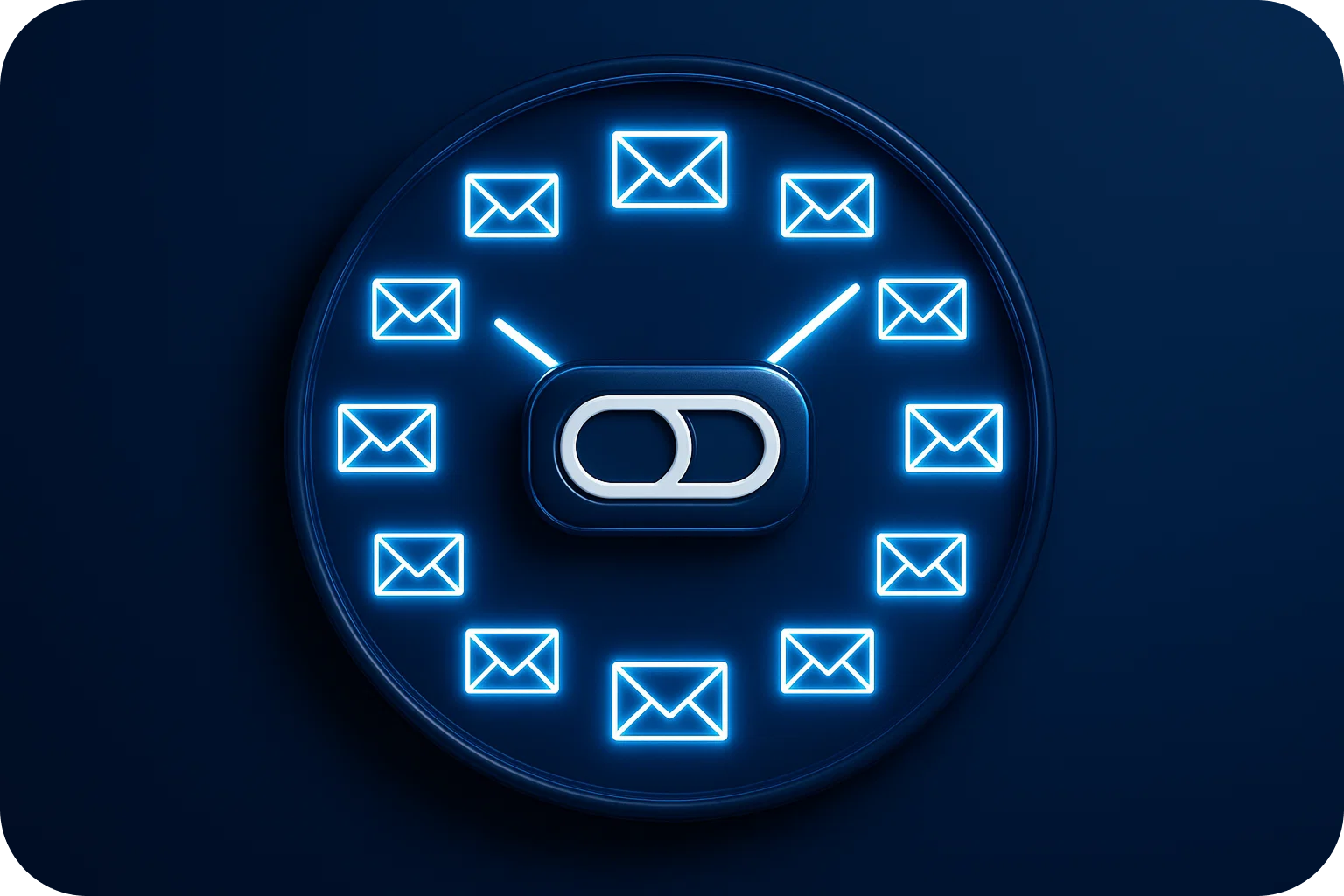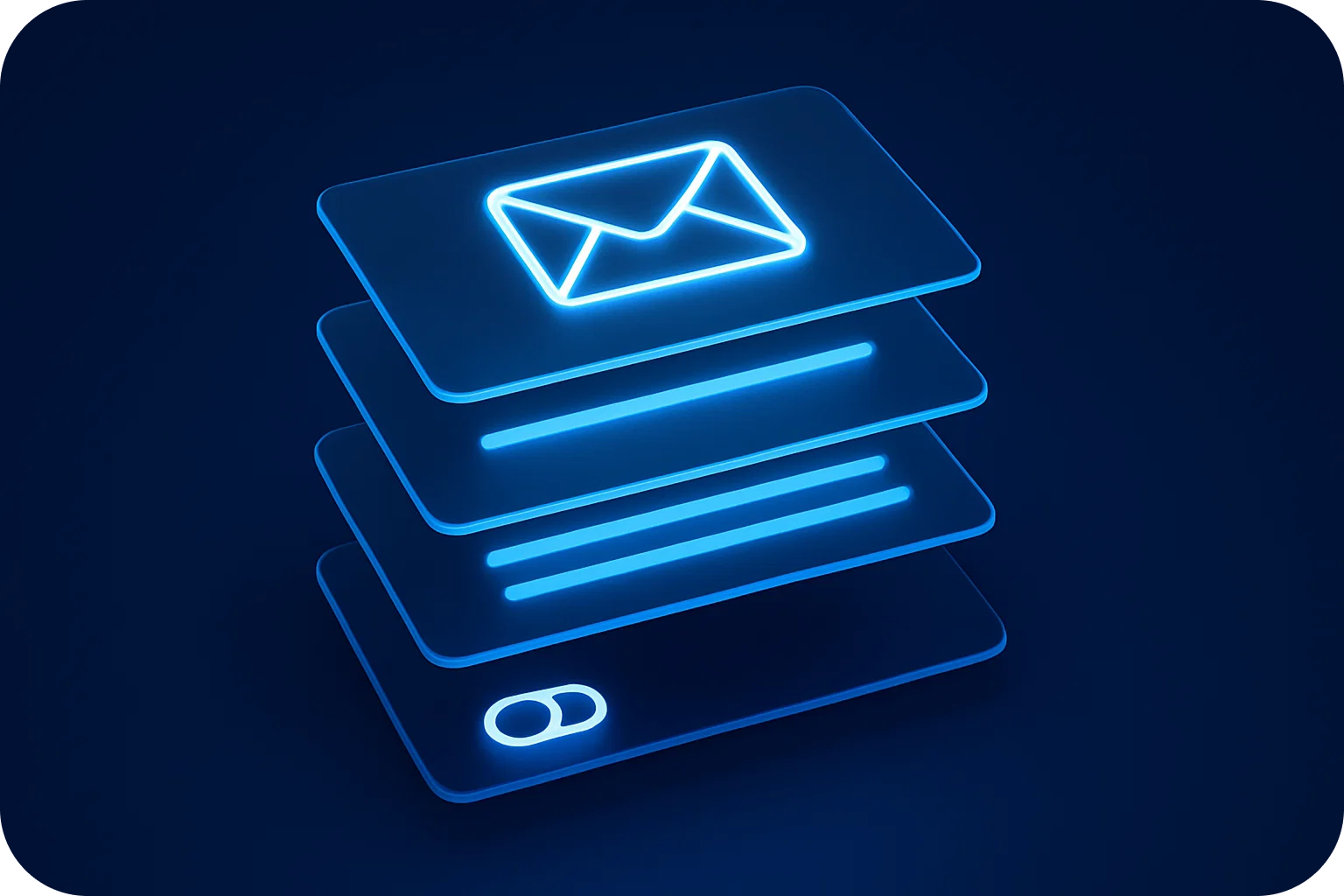The Psychology of Email Timing: Why Tuesday at 10 AM Isn't Universal

We've all heard it: "Send your emails on Tuesday at 10 AM for maximum engagement." This advice has been repeated so often in marketing circles that it's become gospel. But here's the uncomfortable truth—this "universal" best practice might be sabotaging your cold email campaigns.
The reality is far more nuanced than a single time slot can capture. Email timing isn't about finding a magic hour; it's about understanding the psychology of your specific audience and aligning your send times with their behavioral patterns, cognitive states, and decision-making windows.
The Myth of Universal Send Times
The Tuesday at 10 AM recommendation originated from aggregated data across millions of emails sent to diverse audiences. While this data showed a slight uptick in open rates during this window, it created a dangerous oversimplification.
Here's why blanket recommendations fail:
- Industry variations: A software developer's inbox behavior differs drastically from a retail manager's schedule
- Role-based patterns: C-suite executives check email differently than mid-level managers or individual contributors
- Geographic considerations: Time zones and cultural work patterns create vastly different engagement windows
- Company size dynamics: Startup founders operate on different rhythms than corporate employees
When everyone sends emails at the "optimal" time, inboxes become saturated. Your perfectly timed message gets buried under dozens of others following the same advice.
The Psychology Behind Email Engagement
To optimize email timing effectively, you need to understand the cognitive and behavioral factors that influence when someone engages with cold outreach.
Cognitive Load and Decision-Making Windows
People experience different cognitive states throughout their workday. Research in behavioral psychology shows that decision-making capacity fluctuates based on mental fatigue, competing priorities, and environmental factors.
Morning clarity (8-10 AM): Many professionals experience peak cognitive function early in the day. However, this is also when they're triaging urgent matters and planning their day. Your email might get a quick scan, but deferred action.
Mid-morning momentum (10 AM-12 PM): The infamous "sweet spot" exists because people have cleared immediate fires and settled into work mode. But this is also the most competitive window in most inboxes.
Post-lunch lull (1-3 PM): Energy dips after lunch, but this can work in your favor. People often tackle less demanding tasks during this period, including clearing their inbox.
Late afternoon review (4-5 PM): As the workday winds down, professionals often review what landed in their inbox throughout the day and plan for tomorrow.
The Recency Effect in Email
Email clients display messages in reverse chronological order, creating a recency bias. The most recent emails get the most attention. This means send time optimization isn't just about when someone is most receptive, it's about when your email will be at the top of their inbox when they're ready to engage.
For executives who check email three times daily (morning, midday, evening), sending just before these check-in windows can dramatically improve visibility.
Audience-Specific Timing Strategies
Rather than following universal advice, develop timing strategies based on your specific target audience's behavioral patterns.
B2B Decision-Makers
C-Suite executives often check email outside traditional business hours. Early morning (6-7 AM) and evening (7-9 PM) sends can capture attention when their inbox is less crowded. These leaders frequently use email as a planning tool before and after the operational day.
Mid-level managers typically have more structured schedules. Tuesday through Thursday, between 10 AM and 2 PM, often works well because they're in execution mode rather than planning or wrapping up the week.
Technical roles (developers, engineers, designers) often have non-traditional schedules and may engage more during afternoon hours or even late evening when they're in deep work mode.
Industry-Specific Patterns
Healthcare professionals: Avoid mid-morning to early afternoon when patient care peaks. Early morning or late afternoon often yields better results.
Retail and hospitality: Avoid weekends and Monday mornings when operational demands are highest. Tuesday and Wednesday mornings work better.
Finance and legal: Month-end and quarter-end periods create blackout windows. Mid-month timing typically performs better.
Education: Academic calendars create unique patterns. Avoid sending during the semester start, finals, and summer months.
The Follow-Up Timing Formula
Email timing isn't just about the initial send, your follow-up sequence timing is equally critical for send time optimization.
The spacing principle: Research shows that spaced repetition improves message retention and response rates. Your follow-up timing should create a rhythm that feels persistent but not aggressive.
Recommended email follow-up spacing:
- First follow-up: 3-4 business days after initial send
- Second follow-up: 5-7 days after first follow-up
- Third follow-up: 7-10 days after second follow-up
- Break-up email: 14+ days after third follow-up
Time-of-day variation: Don't send all follow-ups at the same time. If your initial email went out at 10 AM, send your first follow-up at 2 PM, the second at 8 AM, and so on. This increases the likelihood of catching your prospect during their engagement window.
Day-of-week rotation: Similarly, vary the days. An initial Tuesday send might be followed up on Friday, then Tuesday again, then Thursday. This prevents pattern recognition that leads to automatic deletion.
Testing Your Way to Optimal Timing
The only way to truly optimize email timing for your specific audience is through systematic testing.
Build Your Testing Framework
Segment your audience: Create test groups based on role, industry, company size, or other relevant factors.
Vary send times systematically: Test morning vs. afternoon, early week vs. late week, and even weekend sends for certain audiences.
Measure the right metrics: Open rates tell only part of the story. Track reply rates, meeting bookings, and conversion metrics to understand true engagement.
Account for sample size: You need statistically significant data before concluding. Minimum 100 sends per time slot for meaningful insights.
What to Track
- Open rate by send time: When do people first engage?
- Time to open: How long after sending does engagement occur?
- Reply rate by send time: Which windows generate actual conversations?
- Reply time patterns: When do prospects respond, regardless of when you sent?
This last metric is particularly revealing. If you notice prospects consistently reply between 7-8 AM regardless of when you sent, that's their engagement window—and you should send just before it.
The Deliverability Timing Factor
Email timing affects more than just engagement, it impacts deliverability. Email service providers monitor sending patterns, and irregular or suspicious timing can trigger spam filters.
Consistent sending schedules signal legitimacy to email providers. Sudden volume spikes or erratic timing patterns raise red flags.
Warm-up considerations: New domains and email accounts should start with conservative volumes during standard business hours before expanding to edge times.
Time zone distribution: If you're sending to multiple time zones, stagger your sends to hit local business hours rather than sending everything at once in your time zone.
Creating Your Personalized Timing Strategy
Stop following generic advice and build a timing strategy tailored to your audience:
- Analyze your existing data: Review your past campaigns for timing patterns in engagement and replies
- Research your audience's schedule: Understand the typical workday structure for your target roles and industries
- Test systematically: Run controlled tests with different segments and time slots
- Monitor and adjust: Email timing isn't set-and-forget; audience behaviors evolve
- Consider the full journey: Optimize not just initial sends but your entire email follow-up sequence
The Bottom Line
Tuesday at 10 AM isn't wrong, it's just incomplete. This timing might work for some audiences while failing spectacularly for others. The psychology of email timing is deeply personal and contextual.
Your competitive advantage doesn't come from following the same playbook as everyone else. It comes from understanding your specific audience's cognitive patterns, work rhythms, and engagement windows, then optimizing your send times accordingly.
The best send time for your cold email campaigns is the one you've tested and validated with your actual audience. Everything else is just educated guessing.
Start treating email timing as a strategic variable rather than a solved problem, and you'll see your engagement metrics reflect the difference.
More articles
Get started now




%201.png)



.png)

